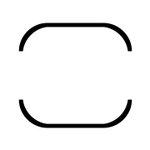Sublime
An inspiration engine for ideas

Bioregioning - Future Observatory Journal
fojournal.org
Judges describes cycles of apostasy, oppression, and deliverance in the southern region (3:7–31), the central region (6:1—10:5), the eastern region (10:6—12:15), and the western region (13:1—16:31).
Thomas Nelson • Nelson's Complete Book of Bible Maps and Charts, 3rd Edition
The Rephaim (to whom Og belonged) occupied Transjordan from Mount Hermon to Ammon; like the Anakim, they were defeated by Joshua amid the wars of conquest, although David still clashed with some of them who lived on the West Bank (2 Samuel 21:15-21). They were also present in Gilead and were exterminated by the Amorites. The etymology of [rephaim]
... See moreMauro Biglino • Gods of the Bible
The date of these documents, called J, E, D, and P, has been the subject of much debate in recent biblical scholarship. The oldest document is most likely J, which was given this name since in Genesis it typically uses the four-letter name of God, YHWH (rT1r'…
Some highlights have been hidden or truncated due to export limits.
Marc Zvi Brettler PhD • How to Read the Bible
Study was glorified as the ultimate mitzvah:
Irving Greenberg • The Jewish Way: Living the Holidays
Repeated deliverances by God are described in the middle section of the book (3:5—16:31) which presents seven cycles of apostasy, oppression, cry for deliverance, salvation, and rest.
Thomas Nelson • Nelson's Complete Book of Bible Maps and Charts, 3rd Edition
Remember back in Genesis 49:8–12 when Jacob-Israel was dying and he prophesied a blessing over each of his sons? What we learn today about the size and preeminence of the tribe of Judah aligns perfectly with what Jacob-Israel said about Judah on that day over four hundred years ago.